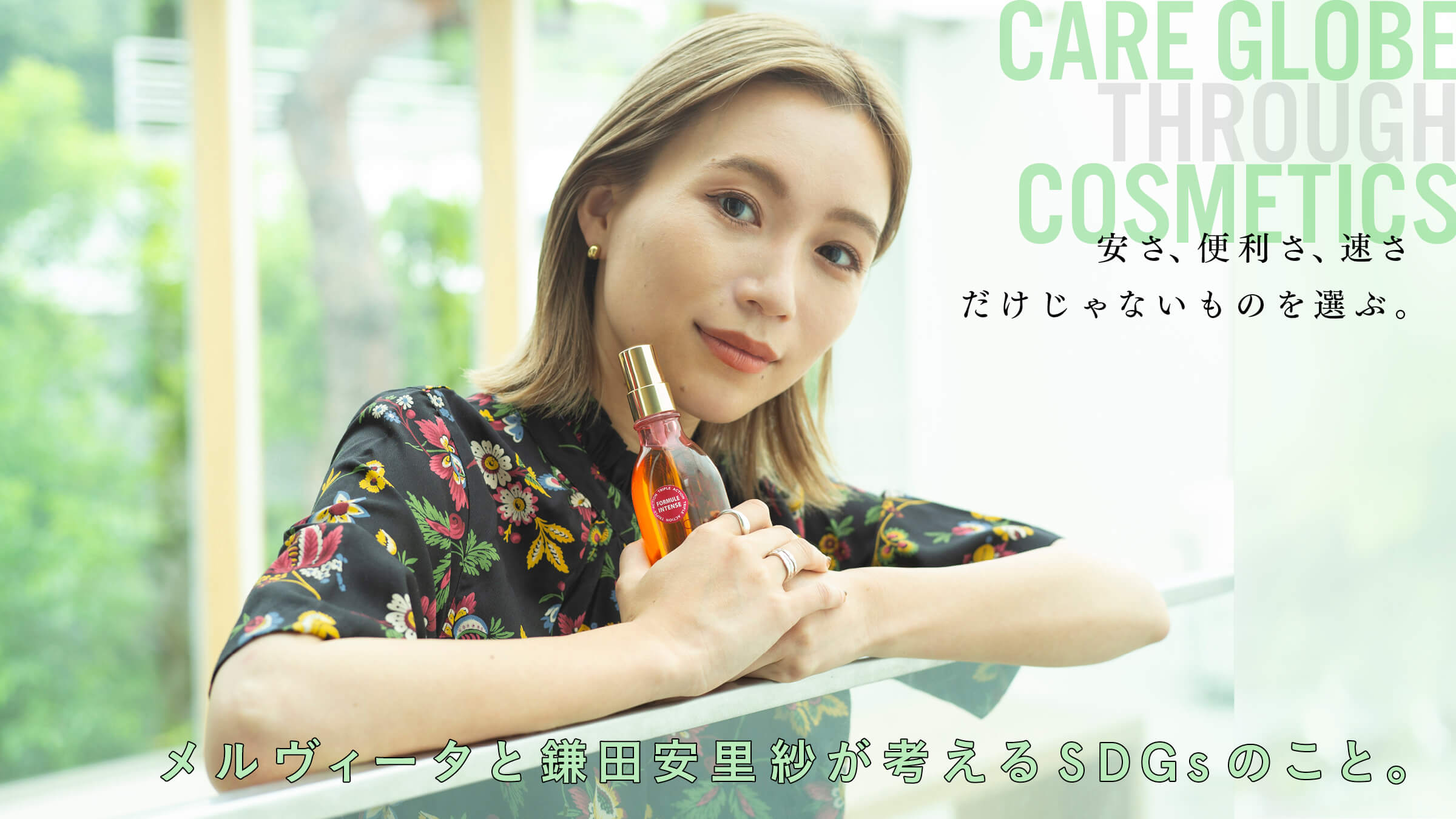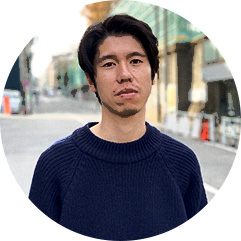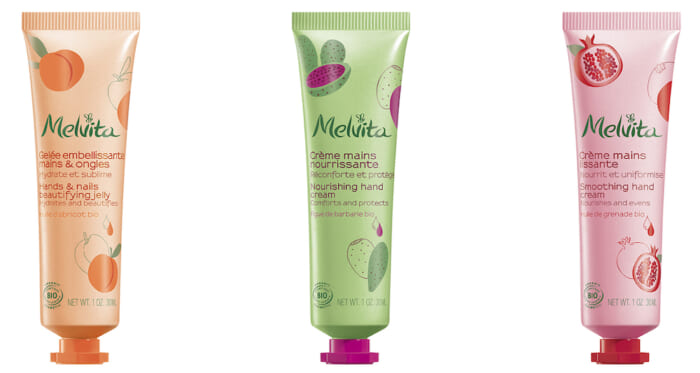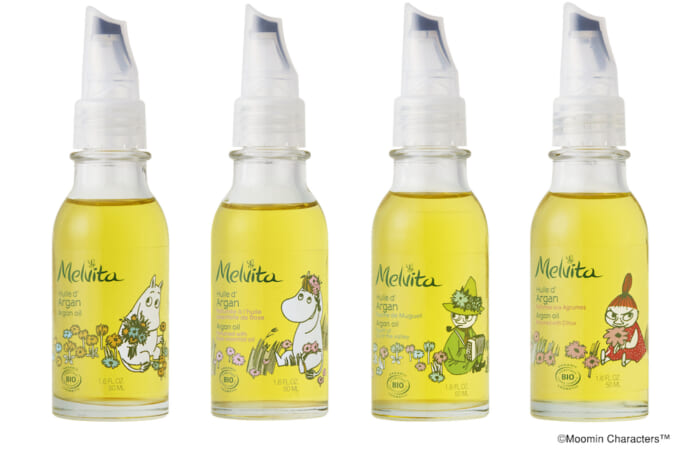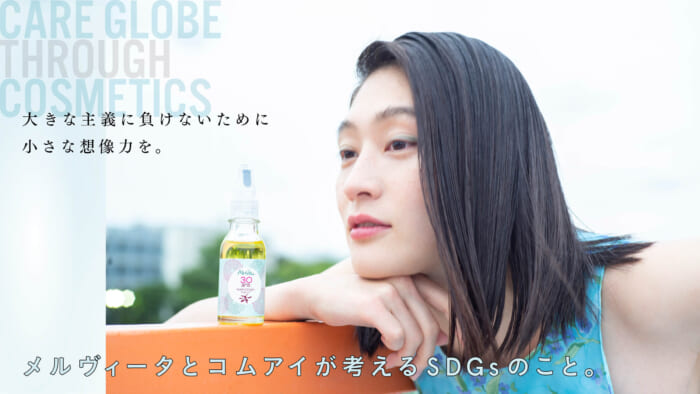PROFILE
. Born in Tokushima Prefecture in 1992. In 2011, she entered the Faculty of Policy Management at Keio University, where she is currently enrolled in the doctoral program of the Graduate School of Media and Governance at SFC. . She is the co-chairperson of "unisteps," a general incorporated association that disseminates information on ethical fashion and its surroundings, and the president of "Little Life Lab," an online community.
Instagram:@arisa_kamada Twitter:@arisa_kamada
I want to know the answer , but I have to figure it out for myself.
. How did you become aware of the SDGs?
Kamata: . I was always interested in how things are made. I started as an apparel store clerk and was put in charge of planning halfway through my career, but I was able to create clothes without knowing the background of production. I looked at photos from collections and street snapshots to find items with the atmosphere I wanted to create, and then selected materials from fabric samples...it was like a puzzle. It seemed strange to me that I could be involved in creating clothes in this way, even though I did not know where the fabrics and threads came from, and even though I was not trained in the art of making clothes.
You are involved in a project called "Clothes Seed," in which participants experience the process of making clothes by growing cotton from seeds, harvesting the resulting cotton, and actually making clothing. Could you tell us more about the project?
Kamata: If cotton seeds are sown around May, they will flower and produce fruit around July or August; when the weather turns cold around November, they will wither and the fruit will pop, producing cotton balls. Each participant collects the cotton harvested at home and takes it to a spinning mill to have it turned into yarn, then to a fabric mill to turn it into fabric, and then to everyone to design and make clothes. We started this project in the hope that people would feel more familiar with the process of making clothes by experiencing it firsthand. Above all, the process of transforming a seed into clothing is very interesting. I also plan to learn how to make daily necessities derived from clothes, organize trips to visit factories overseas, and create lectures and online communities.

. When I look at your activities, I see that you are aware of the SDGs, which are often perceived as a big scale, but you want to make them accessible to people. Could you tell us what is important to you when you think about the SDGs from a sei-katsu-sha perspective?
Kamata: When we hear the word "environmental issues," we tend to think of them as problems that are separate from our own lives, topics that interest some people and not others, but I believe that they are an extension of our daily lives and are relevant to all of us. I believe that it is an extension of our daily lives and relevant to everyone. As with any social issue, it is not some distant problem, and you are a part of it. . For example, when I buy something, I am always concerned about what comes next. I don't always choose things stoically either, though I live with a subtle sense of guilt and a moderate amount of commitment and compromise (laughs).
. So you are saying that all people are involved in environmental issues.
Kamata: But even if we are told to "imagine it," there are limits. . That is why it is important to experience things firsthand. For example, many people are starting home farms these days. This may be because more and more people want to intuitively feel how their lives are made up.
Ms. Kamata, did you take this approach because you ran into a wall when thinking about the SDGs?
Kamata: No, it was much earlier than that, because regardless of the SDGs, I myself was concerned about how the clothes I had in front of me got here and what would happen to them after I gave them away. Basically, there should be very few people who sincerely want to exploit someone or make the environment worse, right? I think that the SDGs will help many people to look at such systemic problems. I believe that even those who feel distant from the SDGs may have a simple sense that they do not want their lives to be based on someone else's sacrifice or destruction of the environment.

. Also, the SDGs are complex, not just one justice, but several conflicting justifications, which makes it difficult.
Kamata: Yes, I agree. I think it is natural that what we think is right is different because human beings are diverse and each of us has a different way of thinking. . That is why I have to think about what I think is right. It would be nice to know the answer quickly (laughs). I feel that it is difficult to learn and think, to change what I need to change, and to make my own choices. . That is the interesting part, though. The common understanding of what is right, data, and so on are constantly changing. . Even in such a situation, I think it is important that we all share and try to change the issues that need to be updated in society as a whole.
Do you consciously use small media such as social networking and web media?
Kamata: . For example, it is difficult to have a two-way exchange on TV or at a big lecture. I felt that social networking sites, which allow direct communication, also have hurdles for everyone to think carefully about complex matters. Instead, I always felt that chatting with people who approached me after speaking at a talk event was the most enjoyable way to "get the message across" and at the same time to gain new perspectives. So I decided to start a closed online community, the "Little Life Lab," with about 100 members, each of whom brings their own interests and questions from their daily life and work, and we discuss and try things out. We all have our antennae up for different things, and I appreciate the opportunity to bring our perspectives together to help resolve the world, or to stop and think about things that I might not have considered on my own.

Why do you keep it closed?
Kamata: There are two thoughts. One is because information can be exchanged with a shared context. . Whether it is Twitter or Instagram, the way it is received can be totally different depending on the person you are talking to. . The other is thinking about how to get the listeners to be on the speaking side. I was talking with a frequent event attendee who told me that it is difficult to talk about this kind of thing with people close to them at work or with their parents, and that they can't write about it on their own social networking sites where their friends can see it. They said that if they suddenly talked about this kind of thing in their own community, people would think that they are very conscious about it. I hope that because it is a closed space, it will be a good opportunity for me to write my thoughts on my blog and transmit them. With regard to the SDGs, it is necessary to work in the direction that you think is best based on the environment you are in, but if you are always on the receiving end of information looking for the right answer, nothing will happen, so I try to do this in my own way. However, if you are always on the receiving end of information looking for the right answer, nothing will happen, so I think it would be good to be on the side of those who proactively work, even if it is small. If you try to do something, even something really small, you will expand the area in which you can have your own interpretation.
- 1
- 2


